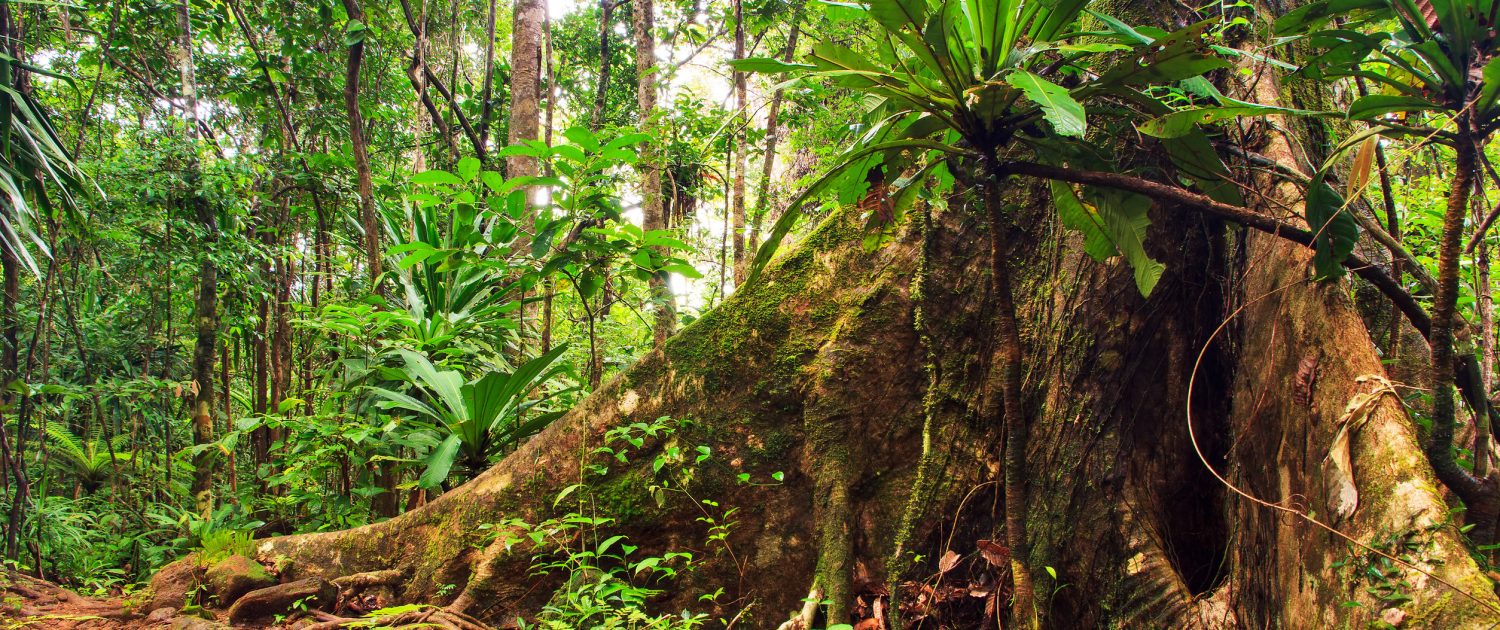Biodiversity and Tropical Rainforests
Biodiversity is the variety of life on Earth or a particular ecosystem in all its forms and interactions. We do not know how many species of plants and animals live in the rainforest; however, we do know it is the most biodiverse ecosystem in the world. For example, rainforests contain 170,000 of the world’s 250,000 known plant species. The Indonesian rainforest has over 30,000 species of plants and 1,600 species of birds.
Why is biodiversity so high in the tropical rainforest?
There are several reasons for biodiversity in the tropical rainforest, including:
- The stable climate, with warm temperatures and high rainfall throughout the year, provides ideal conditions for many species of plants and animals to thrive. The constant warm temperatures and abundant rainfall allow plants to grow year-round, supporting continuous life cycles and enabling many species to coexist.
- The rainforest’s layered structure, including the emergent layer, canopy, understory, and forest floor, creates numerous niches and habitats and supports a diverse array of species.
- Nutrients are rapidly recycled, speeding up plant growth and providing producers with food, which in turn are consumed by primary consumers.
- Large rainforest areas are untouched by humans, allowing nature to thrive and diversify.
What are the threats to biodiversity in the tropical rainforest?
There are several threats to biodiversity in the tropical rainforest. With the exception of lightning strikes, human activity is the main threat to biodiversity. Human threats range from deforestation to the impact of climate change. The main threats to biodiversity are:
- Deforestation: The large-scale clearing of forests for agriculture, logging, and infrastructure development leads to habitat loss, fragmentation, and the direct loss of species. Deforestation reduces the number of available habitats, disrupts ecosystems, and decreases the region’s overall biodiversity.
- Water Pollution: Pollution from agricultural runoff, mining, and industrial activities contaminates rivers and streams in the rainforest. This pollution can harm aquatic life, reduce water quality, and disrupt the ecosystem’s delicate balance, ultimately threatening both aquatic and terrestrial species.
- Climate Change: Rising global temperatures, changing rainfall patterns, and increased frequency of extreme weather events due to climate change pose significant threats to tropical rainforests. These changes can alter habitats, disrupt food sources, and lead to the migration or extinction of species that cannot adapt quickly enough, resulting in biodiversity loss.
What problems are associated with the decline of biodiversity in the tropical rainforest?
There are a range of issues associated with the decline of biodiversity in the tropical rainforest, including:
- plant and animal species may become extinct before they are even discovered.
- over 25% of all medicines originate from the rainforest, and over 2000 have anti-cancer properties. Given that only 1% of plants in the rainforest have been tested for their medicinal qualities, the decline in biodiversity will limit future medical research and development.
- the decline in biodiversity will have a negative impact on indigenous people as they will struggle to survive.
- the loss of keystone species (those that have multiple connections with other species) will have a detrimental impact on food webs.
Related Topics
Use the images below to explore related GeoTopics.


